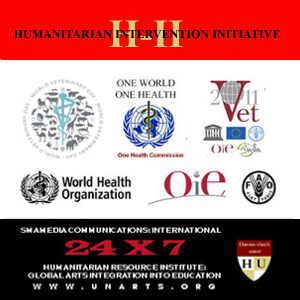.
9 January 2012
Stephen
M. Apatow
Operational
Security: Humanitarian
Intervention Initiative
Founder,
Director of Research and Development
Humanitarian
Resource Institute (UN:NGO:DESA), Humanitarian University
Consortium
Graduate
Studies Center for Medicine, Veterinary Medicine & Law
Phone:
203-668-0282
Email:
s.m.apatow@H-II.org
Internet:
www.H-II.org
Pathobiologics
International
Internet:
www.pathobiologics.org
Subject:
HUMINT OPSEC - Molecular Diagnostics Discussion

Dear
Colleagues and Associates:
In
conjunction with HUMINT for Special Operations [1] and utilization of
open source resources such as HealthMap (for
disease outbreak monitoring and real-time surveillance of emerging
public health threats), I am working to expand access to the latest
molecular diagnostics technologies [2] for use in the field with
special protective forces for humanitarian operations.
Recently,
the challenge of pediatric neurological symptoms [3]
associated with influenza infections [4] has prompted discussions about
H5N1 and
human transmissible
strains of avian influenza virus that
originated from H5N1(H3N2,
H1N1 - H2,
H9, H7).
[5,6,7] With H5N1 global circulation as widespread as West Nile
throughout North America, the use of
multiplex or microarray technologies to identify constituent pathogenic
characteristics from segments of the genomic map, moves beyond a
primary strain into diagnostic dimension that changes the face of
clinical human and veterinary medicine. The starting point for
this
discussion was the conclusion of the 2006 ProMED discussion on atypical
infections associated with H5N1:
[There
is still a deficit of comprehensive seroprevalence data to
establish
the true frequency of subclinical infections and the relevance of these
sporadic
accounts of atypical infections listed above. For a discussion of this
topic
and an evaluation of some published seroprevalence studies, the reader
is
referred to the ProMED-mail posts archived as Avian influenza, human -
Eurasia
(41): multicountry 20060130.0290 and Avian influenza, human - East Asia
(195):
China 20051208.3538. - Mod.CP] -- PRO/AH>
Avian influenza, human (140): atypical infections, 05-SEP-2006
20060905.2522
Today,
in conjunction with conventional operational medicine, [8]
the focus of special operations and comprehensive intelligence
gathering capabilities leads us to the need for molecular diagnostic
technologies, with
accepted OIE/FAO/WHO
validation, real time satellite communication links to the diagnostic
lab lab, bioinformatics analysis and real time guidance for clinical
applications in the field. [9]
We
welcome feedback and contributions from biotechnology companies and the
research community.
Related:
References:
1. Human Intelligence (HUMINT) for
Special Operations: Operational Security:
Humanitarian Intervention
Initiative. Url:
www.H-II.org/ref/humint
2. Bioinformatics: Pathological
Diagnostics, Pathobiologics International. Url:
www.humanitarian.net/biodefense/bioinformatics/
3. Highly pathogenic
H5N1 influenza virus can enter the central nervous system and induce
neuroinflammation and neurodegeneration: Published online before
print August 10, 2009,
doi: 10.1073/pnas.0900096106
. Url: www.pnas.org/content/106/33/14063.full
4. Influenza: USA
(OH) institutional children with neuro conditions: ProMED, 05 Jan 2012.
Url: www.promedmail.org/direct.php?id=20120105.1001023
5. Africa -
International Public Health Emergency: Pathobiologics
International: November 2006. Url:
www.pathobiologics.org/btac/UNIHR1292007.html
6.
Influenza:
Biodefense and Epidemiological Tracking. Url:
www.humanitarian.net/biodefense/fazdc/influenza_biodefense.html
7. Severe Acute Respiratory Syndrome (SARS):
Biodefense and Epidemiological Tracking. Url:
www.humanitarian.net/biodefense/sars_biodefense.html
8. Operational Medicine: Pathobiologics
International. Url: www.pathobiologics.org/mmp/opmed/
9. Global Infectious
Disease Surveillance and Detection: Assessing the Challenges—Finding
Solutions:
Workshop Summary. Institute of Medicine (US) Forum on Microbial
Threats. Washington (DC): National Academies Press (US); 2007. Url:
www.ncbi.nlm.nih.gov/books/NBK52862/
###
|
Back to OPSEC
Copyright © 2011 Humanitarian Resource Institute.
All rights reserved.
|